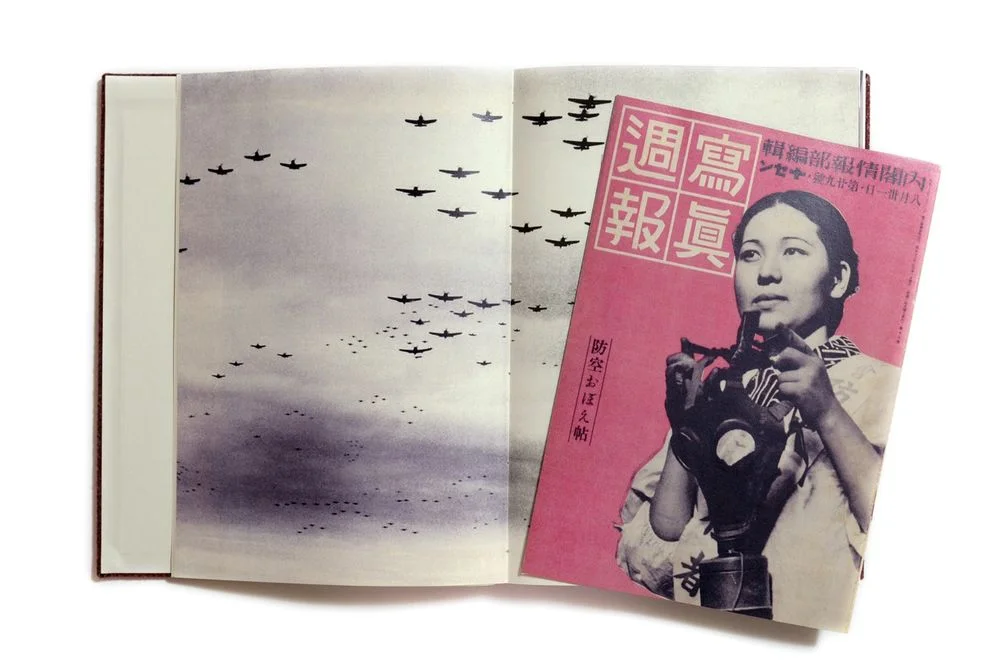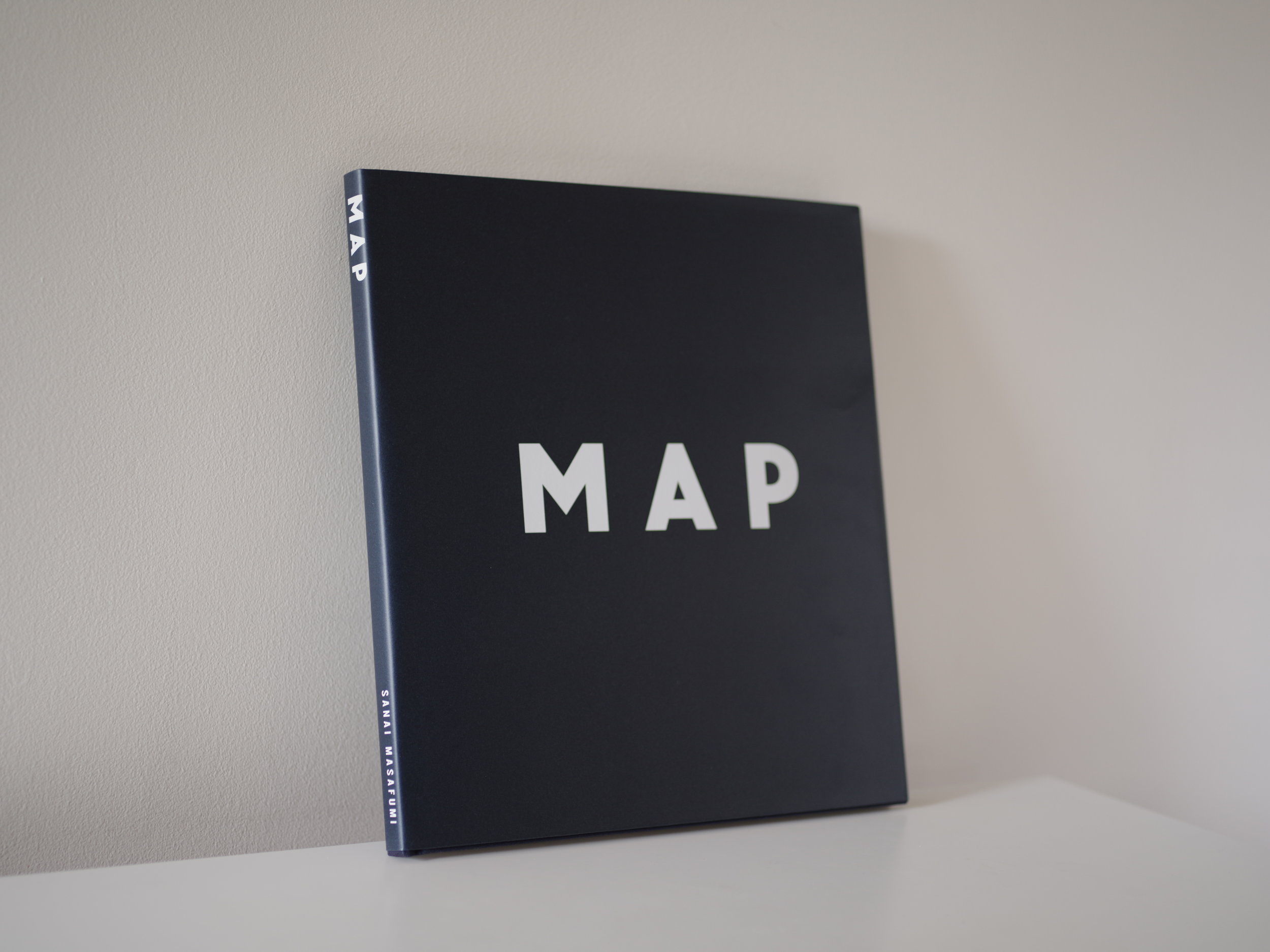In this interview, Shingo Kanagawa speaks about the process behind his well received book Father, the motivation behind it and continuation of the project. He also kindly shares with us some images from an upcoming project about his aunty, and touches on his plans to explore the idea of faith.
Read MoreJust as the images start to make sense, as history begins to be known, more pieces of the puzzle start to appear. We find ourselves navigating maps and craning to understand the machinations of this event. Drawings, diagrams, gas masks and documents give the viewer a sense of decoding, of unscrambling something that shouldn’t make sense. I hold my breath, and then release. What about the rabbits?
Read MoreThat’s why I’m stressing that none of these projects are going to be cliche. People need to understand that Japan isn’t just about Mt. Fuji and geishas. There’s other layers and I think it’s important to show the complexity of that. And in photography there’s so much interesting work that’s not about the usual people that we know. I think that’s important that that’s driving the project to show the complexities.
Read MoreIn the book, there are few moments of respite with an empty page featuring either an asterisk or text from the photographer himself. The former signifies if nothing else…nothingness, while the latter serves an effect similar to the Stephen Shore’s The Nature of Photographs not only in terms of language but as a primer.
Read MoreThe scenes in Imai’s photographs suddenly become oddly familiar and give us pause as we try to place them within our own experience. Imai has described his own photographs as “castaways from the archive of memory” and their power certainly lies in their ability to make us aware of the everyday gaps in our own recollection.
Read MoreFor the upcoming Tsuka exhibition at the CCP we have commissioned the wonderful Risaku Suzuki to produce a new series of photographs in response to the themes investigated. The new series is titled Kyozuka, Kumano and the photographs were made with a large-format 8x10” camera and will be exhibited as exquisitely detailed contact prints.
Read MoreAt first immaculate, the family photographs displayed appear to be more and more unreadable, details disappearing, faces erased from them. Some images hang on the page, fragile, and we grasp the vulnerability of those lives, just about to fall. In dialogue with the partly retrieved belongings and photographs from her home and father’s photographic studio, Suzuki then points her father’s found lens at what is now left behind.
Read MoreWe can’t help but find similar shapes between a bubble hovering uncomfortably close to a woollen jumper and an abstracted gold foil off an eaten Christmas chocolate coin. A memory of the image we passed three pages back springs into the foreground when something similar or absurdly juxtaposed appears, a past which is fixed in the future.
Read MoreInto the Light is the most recent publication by Yusuke Yamatani. In this interview he outlines his inspirations for the work, which vary from fatherhood to playing punk music. He expands on the idea of 'seeing' and 'being seen', as well as the work's connection to shishashin, referred to i-photography.
Read MoreAs you turn the pages of Hamada’s 2014 publication titled photograph at first and second glance the works seem to expose a connection between the natural and built environments, one can see a kind of harmony that coexists within these two opposite elements. Yet after turning the pages further and getting deeper within the book a sense of beauty and contemplation becomes evident through the use of light and a sense of discovery amongst the vernacular.
Read MoreIn this interview with James Bugg and Kristian Häggblom, Okahara discusses the reasons behind his project, the process of creating a traveling/performative artist's book, and how he continues to focus on the idea of finding 'ibasyo' in contemporary Japanese society
Read MoreThe Tsuka Fundraising Auction & Preview will be held to raise capital through the auction of participating artists’ photobooks and an exhibition of limited edition purchasable prints from Hajime Kimura’s project Snowflakes Dog Man. The evening will be limited to 50 tickets and Japanese cuisine will be served with refreshments. Audio entertainment will be supplied by Japanese filmmaker, composer and personality Ken Nishikawa via a specially recorded program. Ticket holders will also be entered into a raffle to win illustrious publications.
Read MoreThese photographs were taken after 3/11 in Fukushima. Imai visited the stricken area often and selected landscape locations 20 km from the 'zone.' where it is silent and mistakenly looks like nothing has happened. Imai quietly questions if the area beyond 20 kms is actually safe? For Tsuka Imai is also working on a video iteration of this powerful project.
Read MorePhotographs and memory are, of course, inherently bound together. Photographs link to the moment, or place, or person that they depict, even after their demise. They are markers and memorials, often trusted beyond their capacity, altering our recollection of what really went on, fabricating what feel like memories. I get the feeling, as I revisit this book over and over, that the act of laying down these memories acknowledges that these images construct an imperfect and incomplete portrait. They are what Kimura can peg together through a set of imperfect tools: a dog, a photo album and conversations.
Read MoreIn this interview with Dr. Kristian Haggblom and James Bugg, Fuji discusses the background of his project Hiroshima Graph - Rabbits abandon their children, how it fits into a larger ongoing project on similar themes, and how it relates and differs to his successful 2014 book Red String.
Read MoreIn this interview with Dr. Kristian Haggblom, Obara discusses the aftermath of the release of his award winning book. He also lets us in on his new Chernobyl project, and further explores Asian war atrocities through his new projects.
Read MoreAs the water dominates the extreme foreground, Narahashi creates the impression of being suspended between freedom and fear – on the verge of rising above the water or disappearing below its surface. Pointing her camera back towards the land, Narahashi likens the perspective to the viewpoint of a sea otter or seal. She seems comfortable in her watery world, uninterested in communicating with the people that can be glimpsed on the shore or swimming nearby.
Read MoreI’m really interested in different ways to show and display images. In the present digital era, photography is not a medium to presented on paper alone. Now we have to think devotedly about how to display images, and even bigger questions, such as what is photography? These new ways of thinking about and questioning photography influence and inspire my dedication to presentation and detail.
Read MoreA single photograph contains various powers – the beauty of light, the presence of objects and the people, and expressions from shadows. It never points in a single direction. It has distinctive and multiple vectors. We breathe in the places where these vectors come and go.
This is the free space where our mind can swim.
Read MoreIn some ways it's like Robert Frank's iconic The Americans, its a study of place and a book that quietly sneaks its meaning upon you. The place in Masafumi's pictures is smaller, more introverted and in that sense doesn't share the same scope or grandiosity of Frank's vision. It's a guide to place as much as its predecessor is, but it’s a geographically smaller one and no less personal, even if it appears more fractured.
Read More


















